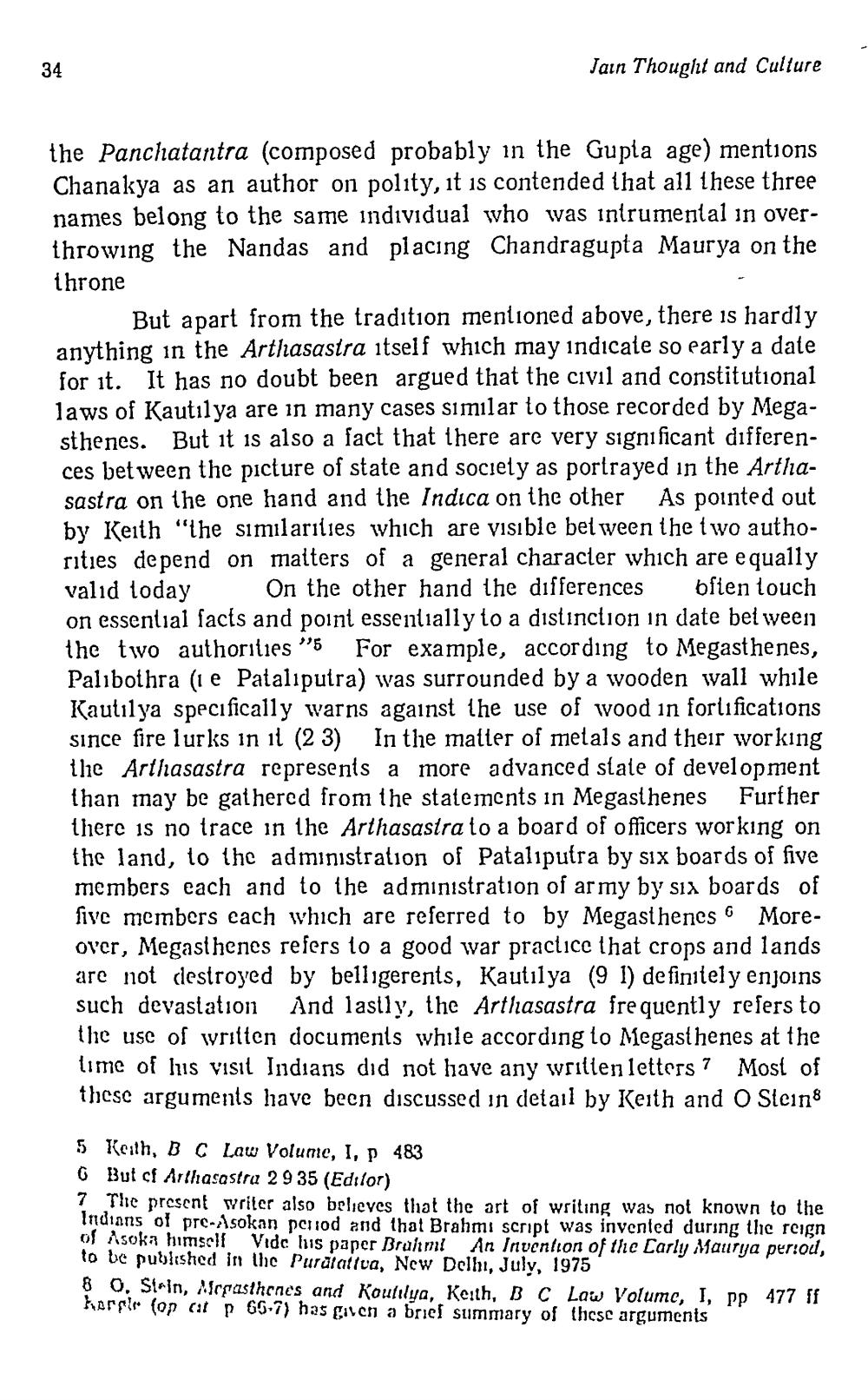________________
Jain Thought and Culture
the Panchatantra (composed probably in the Gupla age) mentions Chanakya as an author on polity, it is contended that all these three names belong to the same individual who was intrumental in overthrowing the Nandas and placing Chandragupta Maurya on the throne
But apart from the tradition mentioned above, there is hardly anything in the Arthasastra itself which may indicate so early a date for it. It has no doubt been argued that the civil and constitutional laws of Kautilya are in many cases similar to those recorded by Megasthenes. But it is also a fact that there are very significant differences between the picture of state and society as portrayed in the Arthasastra on the one hand and the Indica on the other As pointed out by Keith "the similarities which are visible bel ween the two authorities depend on matters of a general character which are equally valid today On the other hand the differences bfien touch on essential facts and point essentially to a distinction in date bel ween the two authorities "5 For example, according to Megasthenes, Palibothra (i e Patalıputra) was surrounded by a wooden wall while Kautilya specifically warns against the use of wood in fortifications since fire lurks in it (23) In the matter of metals and their working the Arthasastra represents a more advanced state of development than may be gathered from the statements in Megasthenes Further there is no trace in the Arthasastra to a board of officers working on the land, to the administration of Pataliputra by six boards of five members cach and to the administration of army by six boards of sive members each which are referred to by Megasthenes 6 Moreover, Megasthenes refers to a good war practice that crops and lands are not destroyed by belligerents, Kautilya (91) definitely enjoins such devastation And lastly, the Arthasastra frequently refers to the use of written documents while according to Megasthenes at the lime of lus visit Indians did not have any written letters ? Most of these arguments have been discussed in detail by Keith and 0 Stein
5 Keith, BC Law Volume, I, p. 483 6 But cf Arthasastra 2 935 (Edilor) 7 The present writer also believes that the art of writing was not known to the Indians of pre-sokan period and that Brahmi script was invented during the reign of Asoka himsell Vidc his paper Brahmi An Invention of the Carly Maurija period, to be published in the Puralattua, New Delhi, July, 1975 8 O. Strin, Mcrasthenes and Koutilya, Keith, B C Law Volume, I, PP 477 if kerg (op cat p 65-7) has given a brief summary of these arguments




